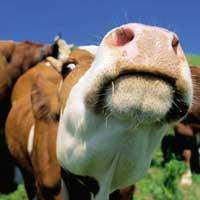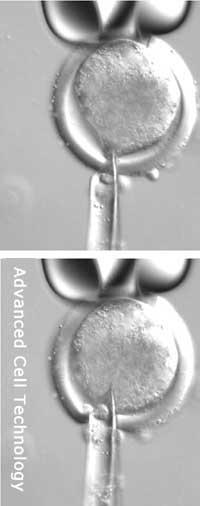Transplantation of cloned bovine tissue without rejection

The cow tissues obtained by cloning have been raised in laboratory and converted into hearts, bones and kidneys. To do this, they have introduced the nucleus of a cell of the ear of a cow into the oculum evicted from another cow to become electrically excited and start the development of the embryo. Then the four-day cloned embryo has been introduced into another cow and has grown naturally for 5-6 weeks. Organ tissues, such as those of the heart, bones and kidneys, are then removed from the embryo to continue growth in the laboratory.
These tissues have been deposited in organ molds, obtaining miniorgans grown in laboratory. Finally, the donor cow (the cow that donated the ear cell, that is, the clone of origin) has been transplanted with one of these kidneys. Through the journal Nature Biotechnology it has been announced that the transplanted kidney has been able to perform various functions and there have been no rejections. The article will be published in July, but is available online from today.
No rejection

According to the researchers, the news is very important because they have shown that transplants that do not generate rejection can be performed. Imagine that you are sick and need a kidney. With the usual transplants, although currently the technique is quite well controlled, there is always the risk of rejection, since it is the organ of another and the genetic information of another; but if for you the kidney grows from its genetic material, that is, by cloning, as with the cow, the problem of rejection is easier to overcome.
Researchers from the ACT laboratory have claimed that for the first time they have been able to experimentally analyze the hypothesis that to date was worked at the theoretical level, and therefore its research is so important.
So far it was considered that it could be an obstacle to DNA transplants in ovular mitochondria. And it is that when it is said that by cloning a grain exactly equal to the donor is obtained, the whole truth is not said. From the egg is extracted the nucleus, but not the mitochondria and there, in addition to that of the donor, there is genetic information of the owner of the egg. Therefore, the new cloned specimen will also include this 'strange' genetic information in their cells. Therefore, by using cloning as a source of tissue for transplants, it was considered that this mitochondrial DNA could cause problems, i.e. rejection. ACT laboratory researchers have shown that, at least with your cow, this has not happened.
However, there is a big jump from cow to man. From cow to man there are biological and legal differences. By law, human embryos cannot grow more than 14 days in vitro and one hundred of the most mature cannot be extracted. Therefore, human organs should develop from cells in the laboratory and not from embryonic tissues as they have with cows. That is, they should start with stem cells, like many other research groups.
Buletina
Bidali zure helbide elektronikoa eta jaso asteroko buletina zure sarrera-ontzian











